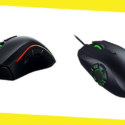Navigating The Impact of New Technologies And Innovations

The field of veterinary medicine is constantly evolving, with new technologies and innovations being developed at an increasingly rapid pace. From the latest surgical procedures to cutting-edge diagnostic tools, these advancements have the potential to greatly improve the care and quality of life for our animal companions. However, as with any rapidly changing field, it can be difficult to stay up-to-date with the latest developments and to understand how the 24 hour vet will impact the future.
Contents
ToggleTelemedicine and Remote Consultations
One of the most exciting developments in veterinary medicine in recent years has been the advent of telemedicine and remote consultations. With the widespread adoption of smartphones, laptops, and other connected devices, pet owners now have access to a wealth of information and resources online. This has led to a growing demand for virtual consultations with veterinarians, which can be conducted via video conferencing, messaging, or other digital platforms.
Advancements in Diagnostic Tools
Another major trend shaping the future of veterinary medicine is the development of new diagnostic tools and techniques. In recent years, veterinary medicine has seen major advancements in areas such as imaging, lab testing, and genomics. For example, the development of new imaging technologies such as CT scans, MRI, and PET scans have greatly improved veterinarians’ ability to diagnose and treat a range of conditions, from cancer to heart disease. Similarly, the introduction of new lab tests and diagnostic panels has allowed for faster and more accurate diagnoses of a range of conditions.
Artificial Intelligence and Machine Learning
Another key area where technology is having a major impact on veterinary medicine is in the use of artificial intelligence (AI) and machine learning (ML). These technologies have the potential to revolutionize the way that veterinary practices operate, from improving the accuracy of diagnoses and treatment plans to streamlining administrative processes.
Robotics and Automation
In recent years, there has been a growing interest in the use of robotics and automation in veterinary medicine, as a way to improve the efficiency and accuracy of procedures and to reduce the risk of errors.
For example, robots and automated systems can be used to perform repetitive tasks such as preparing and administering medications, freeing up veterinarians and technicians to focus on more complex procedures. Additionally, robots can be equipped with advanced imaging and diagnostic tools, allowing for more accurate and efficient diagnoses.
One of the most exciting areas where robotics is having an impact in veterinary medicine is in the development of surgical robots. These systems can provide a higher level of precision and control during surgeries, reducing the risk of complications and improving outcomes. In addition, surgical robots can also reduce the physical strain on surgeons, allowing them to perform more procedures and to work more comfortably.
Personalized Medicine and Precision Therapy
Finally, the rise of personalized medicine and precision therapy is having a major impact on veterinary medicine, as well as human medicine. This approach to treatment is based on a deep understanding of an individual patient’s genetics, lifestyle, and environment, and uses that information to develop highly personalized treatment plans.
Recommended For You
The Ultimate Guide to Going Pro in DOTA 2
Most Inside
Most Inside offers high-quality recommendations and valuable updates to enhance all aspects of your life, providing premium guidance and enriching experiences.




